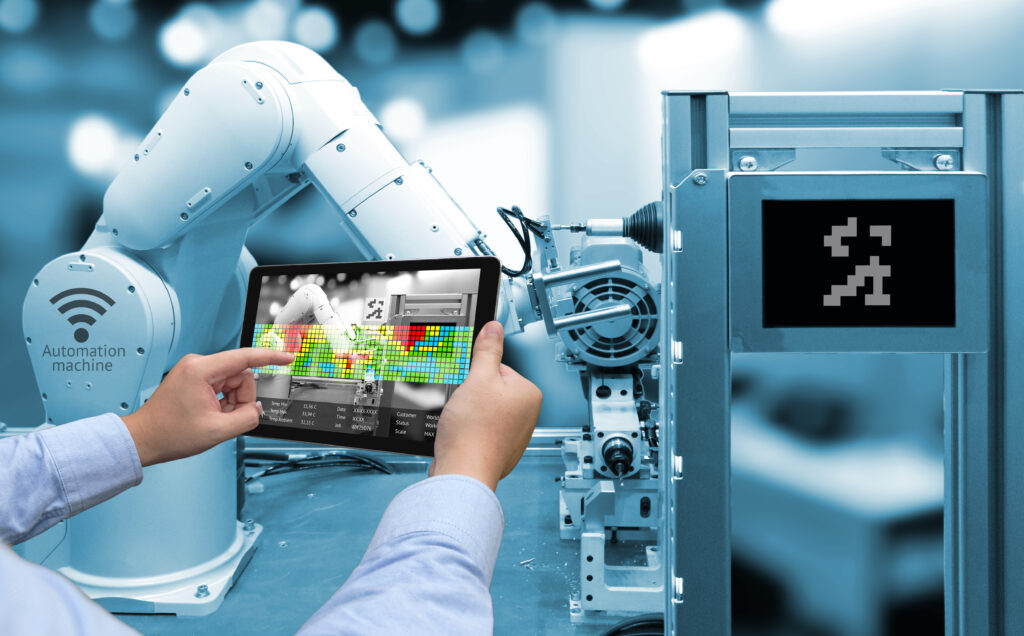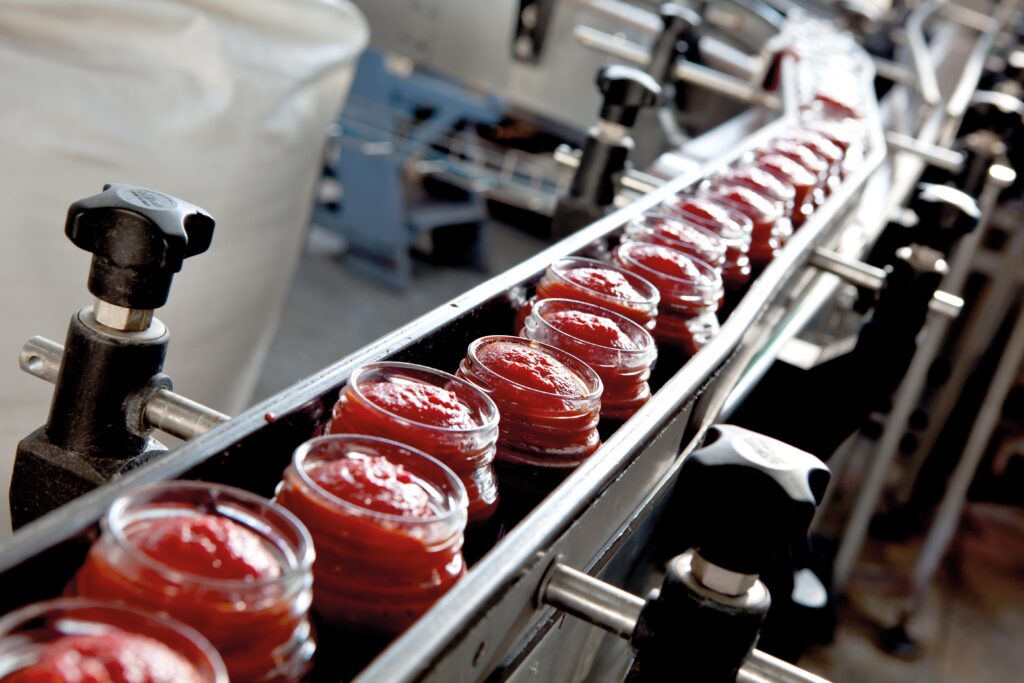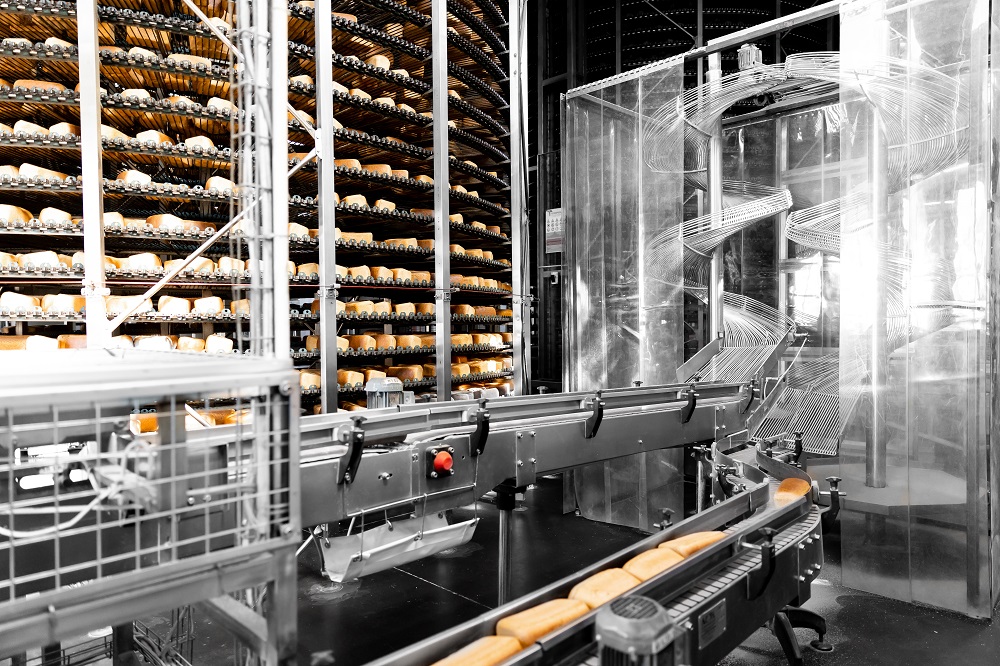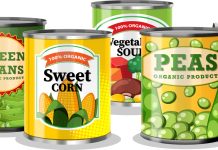 Mechanical, electronic and computer technologies allow food companies to fully automate production lines; they also control the flows of energy, materials and information, to the benefit of productivity and quality.
Mechanical, electronic and computer technologies allow food companies to fully automate production lines; they also control the flows of energy, materials and information, to the benefit of productivity and quality.
Automation is also widely present in the food industry, thanks to mechanical, electronic and computer technologies for the control of all production processes. With automation it is possible to keep under control and monitor the flows of energy, materials and information. Food companies can count on partners who design, build and install customized solutions, integrated with hardware and software components.
Process automation provides technologically advanced solutions, thanks to the configuration and development of DCS and PLC architectures, as well as SCADA software and operator panels, for individual machines or entire production lines. The automation of production processes improves the results and efficiency of the plants, regardless of the company’s size.
Thanks to automation, food companies have access to high quality solutions, better pick-and-place and handling times and faster production lines, including packaging processes. This results in lower costs. Companies are able to respond flexibly to market dynamics and evolving demands of the food industry. In fact, consumers are constantly looking for new, high-quality products, possibly at low prices, with food safety as a prerequisite. Moreover, markets are becoming increasingly globalized.
In a competitive scenario like this, it is strategic to respond to market demands quickly, leaving nothing to chance. Computerized production ensures access to important information, up-to-date, continuous and shared with all those involved. It improves performance, productivity and asset utilization, while reducing the risks and optimizing resource management.
Digitization at the service of food companies
According to a research by the Roma Tre University, commissioned by Unione Italiana Food, an association founded by the union of two of the most representative Italian food industry associations, AIDEPI (Associazione delle Industrie del Dolce e della Pasta Italiane) and AIIPA (Associazione Italiana Industrie Prodotti Alimentari), entrepreneurs in the sector are concerned about foreign trade, sales network management, raw materials, production processes and logistics, together with work organization.
Process digitization is therefore a very topical issue and can help food companies face the market more successfully after a pandemic. Consumers’ demand for fresh, natural and safe food is met by the automation of production processes, thanks to a greater use of automation and robotics to ensure freshness and hygienic safety. Digitization also meets the needs of real-time traceability and precise data can be obtained that are useful to improve the efficiency of the production process.
Packaging and labelling errors are reduced to a minimum if not eliminated, thanks to the use of integrated systems, which link the different production steps and provide real-time information, so that action can be taken promptly. Automation technologies also help prevent failures, with less downtime and waste. The operator can remotely control the operation of the machines and exchange information and data between management and production.
Reducing energy consumption and wastes of products and raw materials are other benefits that food companies can obtain with new automation technologies. Continuous monitoring of the various services ancillary to production allows operators to take the best action and make the best decisions to ensure maximum efficiency with the lowest consumption.

Control and supervision systems
A fundamental role in control and supervision systems is played by electrical panels in AISI 304 and 316 stainless steel, in compliance with the requirements of the main food regulations, to increase productivity in the sector, for automation in packaging, packaging products, kneading lines and mixers, packaging lines, printing machines, flexo, laminator, cutters, etc.
A fully automated process in food companies is provided by Cleaning In Place Systems, that control, supervise and manage the washing cycles, as well as by the Integrated Data Collection Systems for the management of the traceability of raw materials, such as in milk collection, logistics. The need to reduce consumption and increase the competitiveness of international markets leads companies to invest in optimization software solutions.
Software development activities include supervision, efficiency of production lines, energy management, MES applications, integrated analysis of all KPIs (Key Performance Indicators), a set of quantifiable measures that a company uses to assess its performance over time. In particular, the computerized Manufacturing Execution Systems (MES) allow to computerize the management and control of a company’s production, from the arrival of raw materials to the finished product.
An MES system is created with the purpose of connecting the company management system (ERP) with the control systems of the machines in the productive and logistic departments, in order to optimize these processes and the control of resources and product quality. The main functions of an MES system concern the automatic acquisition of machine data, the sending of production orders, the production progress of semi-finished products/finished products in terms of quantity and time and their placing in stock, the type of controls to be carried out, the frequency and the non-conformities detected.
An MES system is able to digitize all the information, automatically collecting the processing data from the machine and transferring the parts produced into the stock. Among the automated processes, there are SCADA (Supervisory Control and Data Acquisition) systems, that is, control, supervision and data acquisition. Thanks to a human-machine interface (HMI), supervision allows the operator to observe the state of a process and to control its evolution; this is generally expressed through a graphic representation of immediate understanding for the operator.
The control function of a SCADA system allows to modify the process, as for example by changing the temperature at which the process must operate. Data acquisition involves the transfer of information from peripheral devices to supervisory computers and vice versa. This is the primary function of SCADA systems, thanks to which the process communicates with the supervision, that is to say it guarantees the precise transfer of information between process and supervision.
One of the main benefits of SCADA systems is that the operator can be replaced in many repetitive and tedious tasks, resulting in increased productivity, and better alarms management. The development of advanced analytics applications connected to the Cloud so that they are available at any time is also crucial to food industry automation. All thanks to IT infrastructures that allow intelligent management of the various automation resources deployed in the firm.
Process automation software perfectly integrates into the plants of food companies. PLC software is used for the control and management of food machines and plants, from the reception of raw materials to the various heat treatments from refrigeration, pasteurization, sterilization, drying, up to packaging. They are also commonly used in CIP lines.
A panel allows operators to monitor the various production steps, as well as the operating parameters, such as open or closed valves, stationary or running machines, temperature, pressure values, and so on. The connection to ERP systems (Enterprise Resource Planning) allows a complete control of all operational phases, including operating reports, production parameters, operating cycles, maintenance in different sections of the company, from production lines to warehouse. Food companies often have to work 24 hours a day 24, 7 days a week, which is why automation systems need to be reliable.
 Automated Warehouses
Automated Warehouses
Logistics is one of the sectors that has best exploited automation. Many warehouses and logistics platforms have installed wireless wiring and adopted intelligent picking systems, even with voice control. Automatic warehouses are more and more frequent ,both with pallet handling systems for pallets coming from production and pallets directed to automatic warehouses or shipping.
Automation, for example, allows the different pallets to be identified by a barcode reader, automatically labelled and dimensionally checked by a shape control system. There are also systems that route the different pallets to their destination or that, if they find a defect, discard the pallets in question. A pallet handling system allows a food company to lighten the workload of a shipping and truck loading area, and to speed up the operations that will be carried out in greater safety even for operators.
Very often an automated warehouse contributes to increase the storage capacity and to enhance the existing site that has been innovated, also improving the synergy of warehouse activities. Activities are followed in real time with greater workflow continuity. Cameras and WCS software (Warehouse Management System) are designed to manage and optimize all logistics processes of a distribution platform, guaranteeing real-time display of the plant status. Automated warehouses are just one of the solutions food companies can choose to improve logistics performance.



